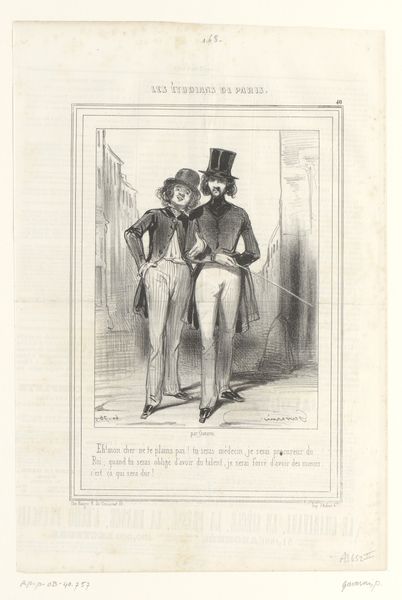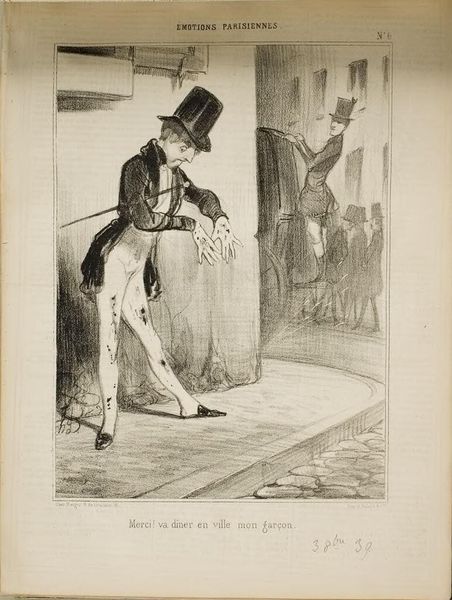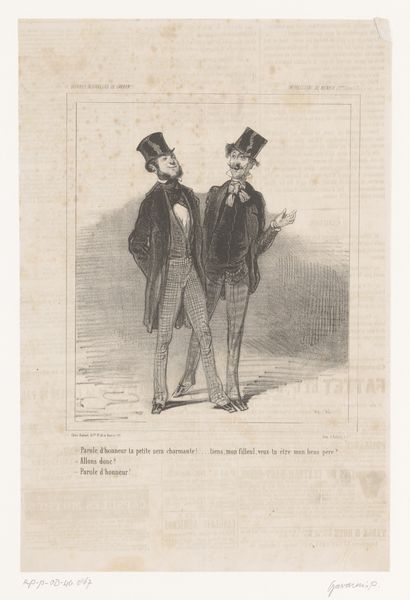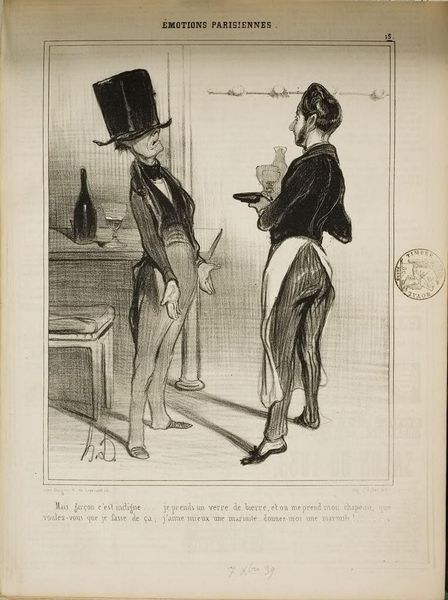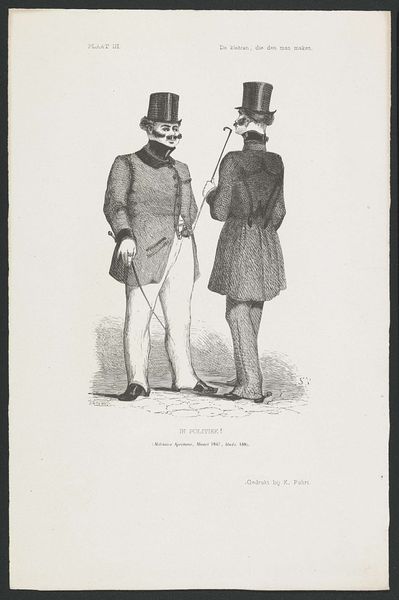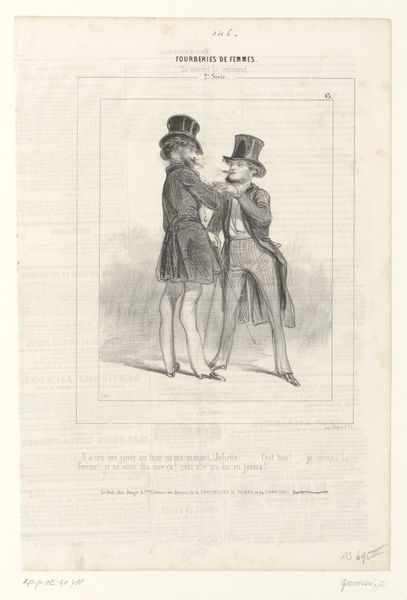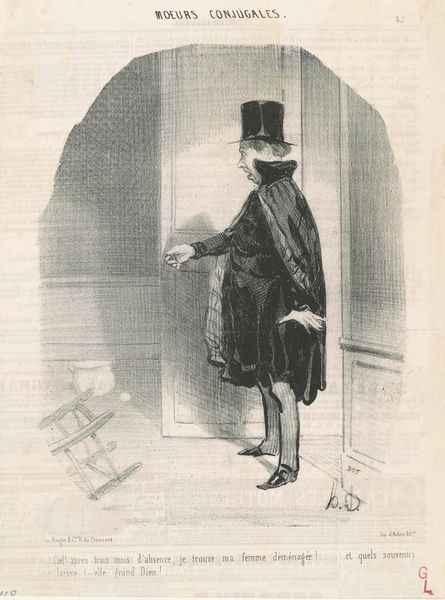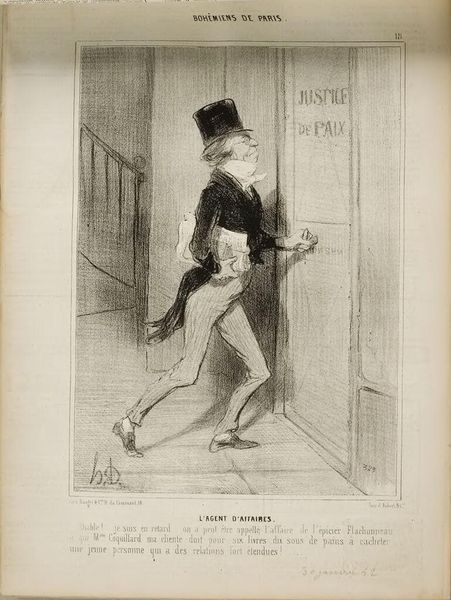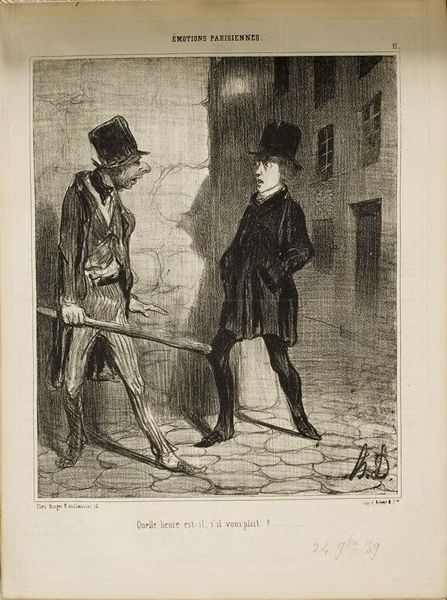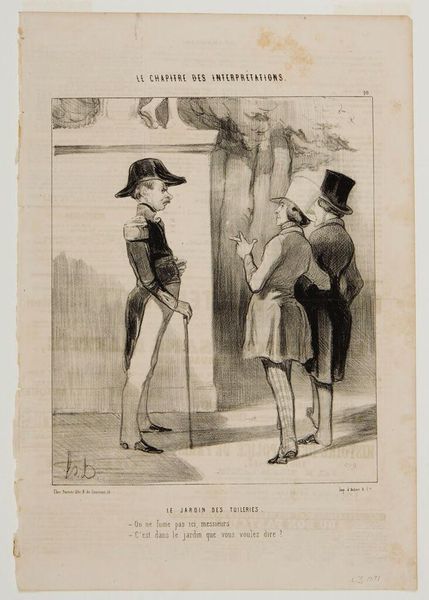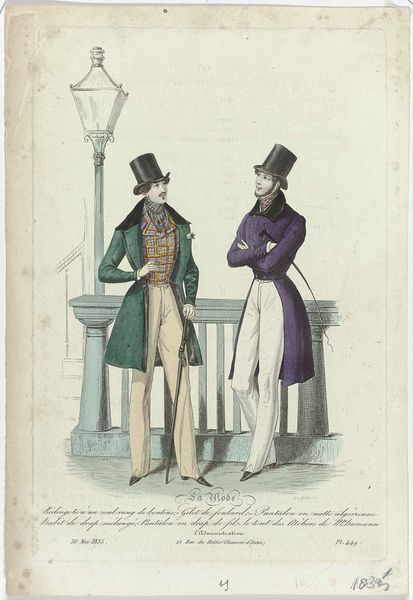
10 O'clock in the Morning. “Monsieur Coquelet having accidentally met Miss Palissandre in the Botanical Garden, to whom he had the good fortune to offer a fairy rose the first of May 1804, had obtained a first date. After having gone to great expense buying a new pair of gloves at 29 Sous, he throws a glance at the mirror before going out to try his good fortune,” plate 4 from La Journé Du Célibataire 1839
0:00
0:00
drawing, lithograph, print, etching, paper
#
portrait
#
drawing
#
lithograph
# print
#
etching
#
caricature
#
paper
#
romanticism
#
france
#
genre-painting
Dimensions: 250 × 202 mm (image); 330 × 252 mm (sheet)
Copyright: Public Domain
This lithograph by Honoré Daumier, titled “10 O'clock in the Morning,” captures a bachelor’s anxious preparation for a date in 1804. The mirrored image is a symbolic doubling, reflecting not only the man's physical appearance but also his inner state of hopeful anticipation and perhaps self-doubt. Mirrors, throughout art history, serve as potent symbols. In Renaissance vanitas paintings, they represent vanity and the fleeting nature of life, while in folklore, mirrors are portals to other worlds, reflecting hidden truths. Here, the mirror acts as a stage, a space where the bachelor performs his identity, meticulously crafting his appearance for the gaze of another. This act of self-presentation taps into a deep, almost primal need for acceptance and connection. The bachelor's nervous gesture of adjusting his gloves, amplified by the mirror’s reflection, speaks volumes. It reminds us that these rituals, however trivial they may seem, are charged with emotional weight. They link us to countless generations who have sought love and connection through similar acts of preparation and display, demonstrating the cyclical dance of human courtship throughout time.
Comments
No comments
Be the first to comment and join the conversation on the ultimate creative platform.
